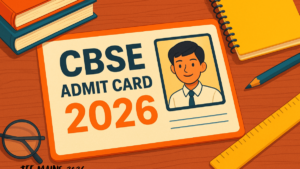Plant Kingdom NEET Biology Notes: Students have studied about Whittaker’s Five Kingdom Classification (1969), which classified living species into Monera, Protista, Fungi, Animalia, and Plantae. Previously, the Two-Kingdom System categorized all organisms with cell walls, including bacteria and fungi, as Plantae.
However, because of advances in scientific understanding, fungi, monera, and protists with cell walls have been eliminated from this kingdom. It is worth noting that cyanobacteria (also known as blue-green algae) were previously classified as algae. However, because they are prokaryotic, they are currently categorized as Monera, not Plantae. Plantae includes Algae, Bryophytes, Pteridophytes, Gymnosperms, and Angiosperms, which we will discuss in this chapter. Also, download the more detailed Important Notes PDF for Plant Kingdom NEET Biology (Chapter 3) for revision.
Plant Kingdom NEET Biology Notes
There are three basic classification systems: artificial, natural, and phylogenetic.
Classification of the Plant Kingdom
1. Artificial Classification System
(a) Base: The first classification systems relied solely on gross superficial morphological characteristics such as habit, color, the number and form of leaves, and so on.
(b) Drawbacks: The separation of closely related species was based on a few traits. In addition, both vegetative and sexual features were given equal weight.
2. Natural System of Classification.
(a) Base: It was based on natural affinities between organisms. It took into account both external and internal aspects such as ultrastructure, anatomy, embryology, and phytochemistry.
(b) George Bentham and Joseph Dalton Hooker introduced the natural classification of flowering plants.
3. Phylogenetic System of Classification
(a) Basis: It was based on evolutionary relationships between the various organisms. This assumes that organisms belonging to the same taxa have a common ancestor.
(b) Given by: Engler and Prantl, Hutchinson, Takhtajan
We now use information from many other sources too to help resolve difficulties in classification. These become more important when there is no supporting fossil evidence.
Branches of Taxonomy
1. Numerical Taxonomy (Phenetics):
It involves the use of numerical methods for the evaluation of similarities and differences between species with the help of computers.
Steps involved in numerical taxonomy:
● Each observable characteristic is assigned numerical values or codes, such as (+) for presence, (-) for absence, and (0) for data not available
● Computers analyze and compare all possible characters, giving them equal importance in classification.
● The core principle of numerical taxonomy lies in the systematic organization and analysis of large datasets to establish relationships between species
● One of the major benefits of this taxonomic method is that hundreds of characters can be considered at the same time.
2. Cytotaxonomy/karyotaxonomy:
It is based on cytological information like chromosome number, structure, behaviour etc.
3. Chemotaxonomy:
It is based on the chemical constituents of the plant. For example- DNA sequence, chemical nature of proteins, crystals (Calcium oxalate or calcium carbonate) and aromatic compounds are used by scientists to resolve confusions in classification.
Practice Questions
Q1. The natural system of classification is based on
(a) External features (b) Ultrastructure and anatomy
(c) Embryology and phytochemistry (d) All of the above
Q2. Which among the following is incorrect about the artificial classification of the plant kingdom?
(a) This classification is mainly based on external features of a plant rather than on its internal features.
(b) It was given by Linnaeus.
(c) Sexual organs are given more preference than vegetative organs.
(d) Artificial classification classifies closely related species.
Comparison Between Algae, Bryophyte, Pteridophyte, Gymnosperm, and Angiosperm
| Comparison between different classes of the Plant Kingdom | |||||
| Feature | Algae | Bryophyte | Pteridophyte | Gymnosperm | Angiosperm |
| Embryophytes | No | Present | Present | Present | Present |
| Tracheophyte | No vascular bundle | No V.B. | Present | Present | Present |
| Spermatophyta | No seed | No seed | No seed | Seed-naked | Seed-covered |
| Dominant phase | Gametophyte | Gametophyte | Sporophyte | Sporophyte | Sporophyte |
| Main Plant body | Haploid | Haploid | Diploid | Diploid | Diploid |
| Spore | Homosporous | Homosporous | Mostly homosporous, Heterosporous (Salvinia and Selaginella), Diploid | Heterosporous | Heterosporous |
| Sex organ | Haploid oogonium (Female sex organ) Antheridium (male sex organ) | Haploid Archegonium, Antheridium |
– Sporangia (Antheridium) Archegonium develop on prothallus | Diploid sporangia – Microsporangia – Megasporangia (Female cone) bears two or more archegonia |
Diploid sporangia – Microsporangia (In Anther) – Megasporangia (In pistil)
|
Algae
Algae are chlorophyll-bearing, simple, thalloid, and non-vascular autotrophic organisms. They occur in aquatic (both fresh and marine) habitats. They are found in damp places, water bodies, in conditions of extreme temperatures (hot springs or in cold ice), on the barks of trees, on rocks and wood, on moist terrestrial habitats etc. They are also associated with other organisms.
For example,
They may be present inside the tissues of other plants (as endophytes), in association with fungi and animals (e.g., on a sloth bear).
The form and size of algae are highly variable, ranging from colonial (Volvox), filamentous (Ulothrix and
Spirogyra and marine forms such as kelp, which form massive plant bodies.
Reproduction of Algae
The algae reproduce by vegetative, asexual, and sexual methods. Vegetative reproduction is by fragmentation. Each fragment develops into a thallus. Asexual reproduction is by the production of different types of spores, the most common being the zoospores. They are flagellated (motile) and, on germination, give rise to new plants.
Classification of Algae:
The classification of algae is mainly based on the photosynthetic pigments, and stored food material, and in addition to this, cell wall composition also forms the basis of classification. The algae are divided into three main classes.
(1) Chlorophyceae – Green Algae
(2) Phaeophyceae – Brown Algae
(3) Rhodophyceae – Red Algae
Difference Between 3 types of algae and their main characteristics
| Classes | Major Pigments | Stored Food | Cell Wall | Flagellar Number and Position of Insertion |
Habitat | Example |
| Chlorophyceae (Green algae) | Chlorophyll a, b | Starch and oil droplets | Cellulose | 2-8, equal, apical | Fresh water, brackish water, salt water |
Chlamydomonas, Volvox, Ulothrix, Spirogyra and
Chara |
| Phaeophyceae (Brown algae) | Chlorophyll a, c, fucoxanthin | Mannitol, laminarin | Cellulose and algin (outer gelatinous coating of the cellulosic wall) | 2, unequal, laterally attached | Fresh water (rare), brackish water, salt water |
Ectocarpus, Dictyota, Laminaria, Sargassum and
Fucus |
| Rhodophyceae (Red algae) | Chlorophyll a, d, phycoerythrin | Floridean starch | Cellulose, pectin, and polysulphate esters | Absent | Fresh water (some), brackish water, salt water (most) |
Polysiphonia, Porphyra, Gracilaria and Gelidium
|
Economic Importance of Algae:
● Photosynthesis: Being photosynthetic, they increase the level of dissolved oxygen in their immediate environment (as during photosynthesis, oxygen is released). It is essential for the respiration of aquatic life.
● Primary producers: Algae are primary producers of energy-rich compounds (food). This forms the basis of the food cycles of all aquatic animals.
● Food supplements: Many species of Porphyra (Red algae), Laminaria and Sargassum (Brown algae) are among the 70 species of marine algae used as food.
● Hydrocolloids: Hydrocolloids are water-holding substances. Certain marine brown and red algae produce large amounts of hydrocolloids, which are used commercially.
● Iodine: Fucus and Laminaria are rich sources of iodine.
Bryophytes
Bryophytes are non-vascular terrestrial plants that thrive in moist habitats. In their life cycle, the multicellular diploid sporophyte depends parasitically on the independent multicellular haploid gametophyte for nutrition. They include various mosses and liverworts, commonly found growing in moist, shaded areas, especially in hilly regions.
Characteristics of Bryophytes
● They are found commonly in damp, humid and shaded localities. The plants are small. They are also called amphibious of the plant kingdom because these plants can live in soil but are dependent on water for sexual reproduction.
● The plant body of bryophytes is more differentiated than that of algae. It is thallus-like and may be prostrate or erect.
● They lack true roots, stems or leaves but possess root-like, leaf-like or stem-like structures. The plant body is attached to the substratum by root-like structures called rhizoids.
● Bryophytes lack vascular tissues such as xylem and phloem. The dominant phase of their life cycle is the haploid gametophyte, which is free-living, while the diploid sporophyte remains dependent and parasitic on the gametophyte for its nutrition.
● The gametophyte produces gametes through mitosis, earning its name. It bears multicellular sex organs, with the male reproductive organ called the antheridium and the female reproductive organ called the archegonium.
● The antheridium is enclosed by a sterile jacket that protects sperm mother cells (androcytes), which produce two biflagellate antherozoids (motile male gametes). The archegonium is flask-shaped, consisting of a swollen venter and a tubular neck. The venter cavity holds a sterile venter canal cell and a fertile egg, while the neck encloses several sterile neck canal cells. Both the male and female sex organs are protected by a jacket layer.

Liverworts
Liverworts usually grow in moist, shady habitats such as banks of streams, marshy ground, damp soil, bark of trees, and deep in the woods. The plant body of liverwort is thalloid, as in Marchantia. The thallus is dorsiventral and closely appressed to the substratum.
Mosses
The predominant stage of the moss life cycle is the gametophyte, which consists of two stages: protonema and leafy The plant body is a leafy gametophyte with multicellular, branched rhizoids for anchorage. It features an upright, slender axis bearing spirally arranged leaves.
Pteridophytes
The pteridophytes, including horsetails and ferns, are the first terrestrial plants to possess vascular tissues, i.e., xylem and phloem. These are found in cool, damp, shady places. Some may flourish well in sandy soil conditions as well.
Characteristics
- In pteridophytes, the main plant body is a sporophyte, which is differentiated into true root, stem and leaves. The leaves are small, called microphylls (as in Selaginella) and large or macrophylls (as in ferns).
- Leaves bearing sporangia are called sporophylls which may be widely scattered or clustered in definite areas and structures called cones or strobili (Selaginella, Equisetum).
- The diploid spore mother cells within the sporangia undergo meiosis (or reduction division) to form haploid spores.
- Gametophytes usually require cool, damp, shady places to grow spread of living pteridophytes is limited and restricted to narrow geographical regions, because of the specific restricted requirement and the need for water for fertilisation.
Classification of Pteridophyta
Pteridophytes are further classified into four classes:
(i) Psilopsida e.g., Psilotum
(ii) Lycopsida e.g., Selaginella, Lycopodium
(iii) Sphenopsida e.g., Equisetum
(iv) Pteropsida e.g., Dryopteris, Pteris, Adiantum
Economic Importance
(i) Soil binding: Pteridophytes bind the soil even along hill slopes. The soil is protected from erosion.
(ii) Medicines: An anthelmintic drug is obtained from a pteridophyte called Dryopteris.
(iii) Ornamentals: Ferns are grown as ornamental plants for their delicate and graceful leaves.
(iv) Food: Marsilea, a water fern, yields starch that constitutes a good source of food for certain tribals.
(v) Scouring: Equisetum stems have been used in scouring (cleaning of utensils) and polishing of metals.
Gymnosperms
Gymnosperms (gymnos-naked, sperma-seeds) are plants in which the ovules are not enclosed by any ovary wall and remain exposed, both before and after fertilization.
Characteristics of Gymnosperms
●The seeds that develop post-fertilization are not covered, i.e., are naked. Gymnosperms include medium-sized trees or tall trees and shrubs only; no herbs are found.
● The plant is a diploid sporophyte that is well differentiated into roots, stems, and leaves. One of the gymnosperms, the Sequoia (Giant redwood tree), is one of the tallest tree species (100m). Roots are generally tap roots.
● Roots in some genera, like Pinus, have a fungal association in the form of mycorrhiza.
● Mycorrhiza is a symbiotic association of a fungus andthe root of a higher plant. Pinus seeds cannot germinate and establish without a mycorrhizal association. In genera like Cycas has small specialized roots called coralloid roots are associated with 𝑁2 – fixing cyanobacteria.
● The stems are unbranched as in Cycas and branched as in Pinus, Cedrus. The leaves may be simple or compound. In Cycas, pinnate leaves persist for a few years.
● The leaves in gymnosperms are well-adapted to withstand extremes of temperature, humidity, and wind. In conifers, the needle-like leaves reduce the surface area.
● Their thick cuticle and sunken stomata also help to reduce water loss. Leaves of Ginkgo are fan-shaped. They have well-developed xylem & phloem. Vessels in xylem and companion cells and sieve tubes in phloem are absent.
Angiosperms
Angiosperms (or flowering plants) are seed plants in which pollen grains and ovules are developed in flowers and seeds are formed inside fruits. They are the most recently and highly evolved plants and thus, are found in most environments on the earth.
Characteristics of Angiosperms
● They range in size from the smallest Wolffia to tall trees of Eucalyptus (over 100 metres). They provide us with food, fodder, fuel, medicines and several other commercially important products.
● Plant body is sporophytic and represented by herbs, shrubs, trees, twiners, trailers, climbers, etc.
● Sporophytic plant body is differentiated into roots, stem and leave.s Depending upon the number of cotyledons (embryonic leaves) in the seeds, angiosperms are divided into two subgroups: dicotyledonous and monocotyledonous plants.
● Sporophylls are aggregated to form flowers. Both microsporophylls and megasporophylls are specialised to form stamen (male sex organ) and pistil (female sex organ) which produces male and female gametes respectively.
● Each stamen consists of a slender filament with an anther at the tip. Within the anthers, the pollen mother cell divides by meiosis to produce microspores which mature into pollen grains.
Neet Notes for Plant Kingdom PDF Download
Download the detailed notes for Plant kingdom classification with a clear diagram from the given link below – Click Here










 CBSE Admit Card 2026 for Private & R...
CBSE Admit Card 2026 for Private & R...
 AILET 2026 AIR 1: Check Full Toppers Lis...
AILET 2026 AIR 1: Check Full Toppers Lis...
 AILET Result 2026 OUT, How to Download S...
AILET Result 2026 OUT, How to Download S...














